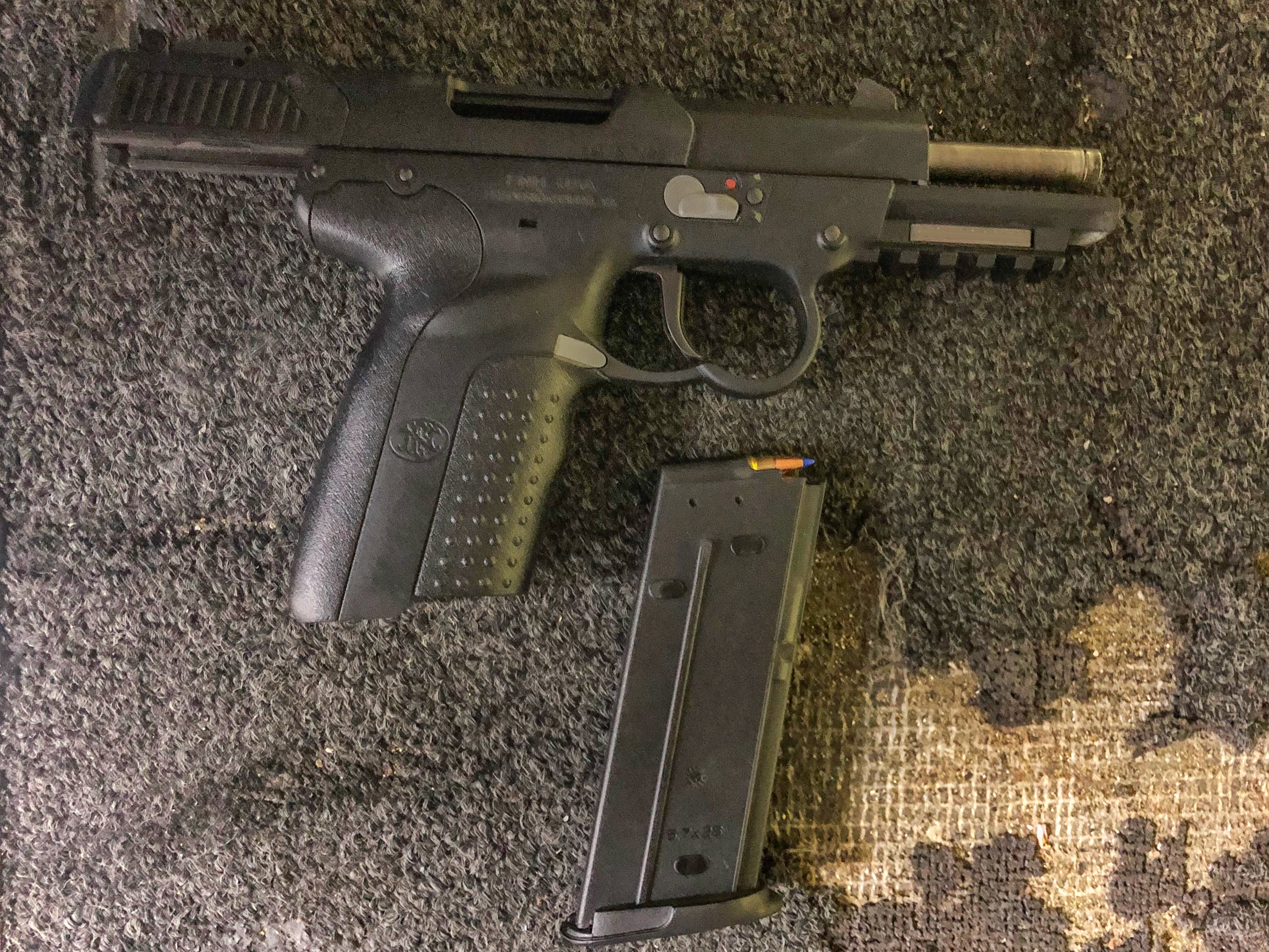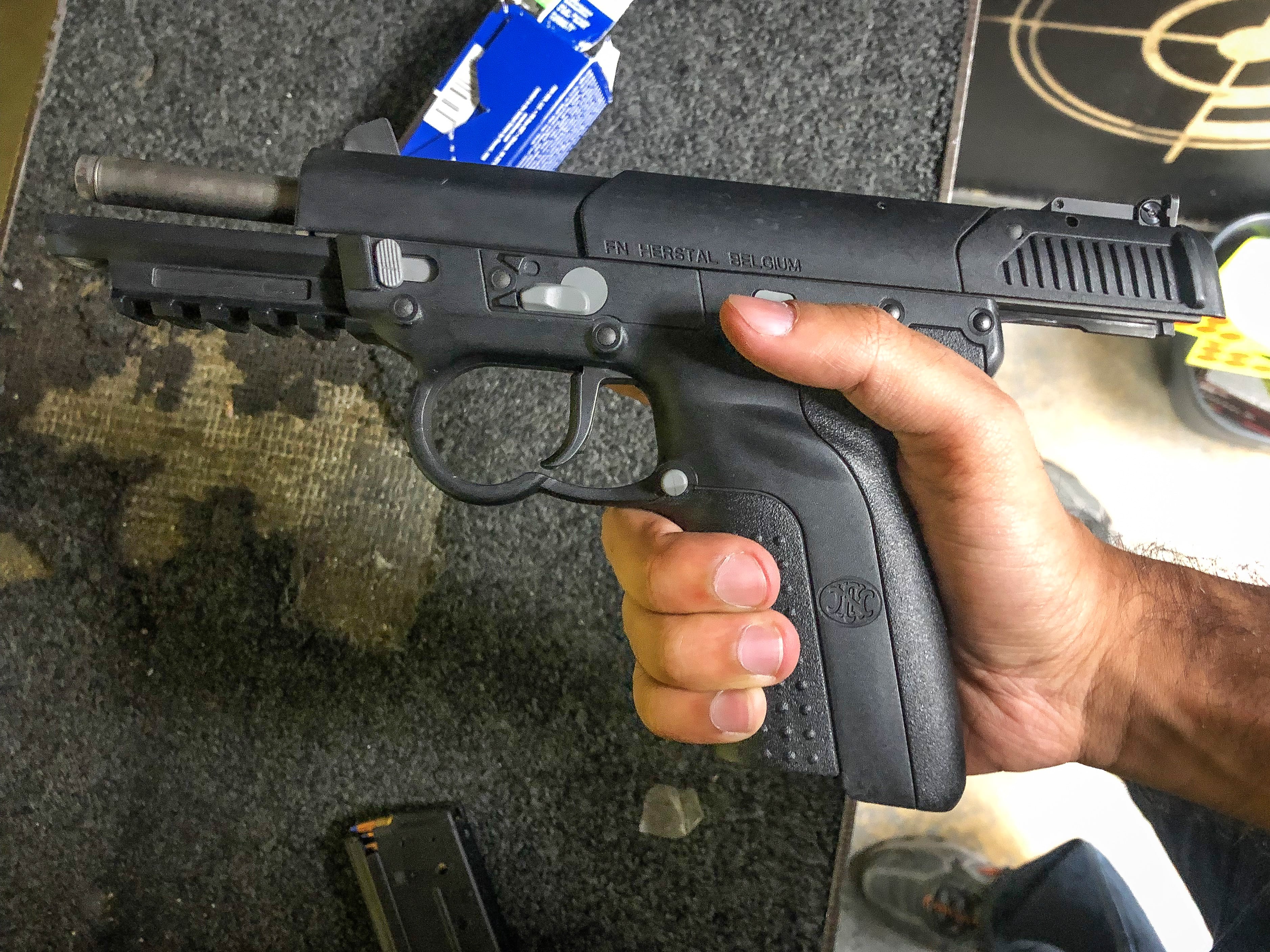In the early 2000s, Fabrique National’s Five-seveN hit the market with an aura surrounding the new gun, primarily thanks to its unique caliber — 5.7x28 mm.
The Five-seveN was born of a NATO scheme to supersede STANAG 4090, an agreement which adopted the 9x19 mm round as the standard sidearm cartridge of all member nations, with something more powerful with better terminal ballistics.
NATO’s goal was to develop a personal defense weapon and a pistol chambered for the new caliber. FN Herstal was among the first firearms manufacturers to throw their hat in the ring with the 5.7x28 mm round, developed in-house as the SS90, and the P90 PDW.
The SS90 boasted armor-piercing capabilities thanks to its insane muzzle velocity, especially when fired through the P90. Rigorous testing conducted by NATO led to the organization attesting to the lethality, efficiency and effectiveness of the new round. In the mid-90s, the company began maturing their concept for a companion pistol which would use the same round, and thus the Five-seveN came to be.
Instead of adopting the new round or any of its competitors, however, NATO doubled down on 9 mm thanks to a German veto, forcing FN to shop its new pistol and submachine gun to foreign markets and law enforcement agencies.
While the pistol became popular with a number of military and police customers, Five-seveNs achieved something more of a cult following in the civilian market instead of the wide acceptance that pistols like the Glock 17 and Sig Sauer P226 enjoyed.
In fact, the Five-seveN seemed to be more popular in video games such as Tom Clancy’s Splinter Cell, than it was in the firearms community, especially being a pistol without an equal round.
After hearing about the gun for years, I finally decided to find one and take it for a spin. In this case, the variant I got my hands on was the Five-seveN IOM (Individual Officer Model), the third generation of the pistol and the first sold to civilian shooters.

At a first glance, the pistol seems somewhat futuristic with an incredibly simple exterior. The layout is different, with an ambidextrous safety selector on both sides of the frame forward of the trigger, designed to be engaged by the shooter’s trigger finger rather than a thumb. A slide stop lever sits semi-recessed into the grip, and the magazine release is exactly where you’d expect to find it near the trigger.
The gun was indeed built with the end user in mind, especially noticeable from the bulbous trigger guard which was designed for shooters wearing thicker gloves, as well as an underbarrel rail for flashlights or aiming lasers. All Five-seveNs come with a standard 20-round double-stack polymer magazine.
A major difference between the Five-seveN and other pistols is the weapon’s iron sights, which are adjustable due to the cartridge’s ballistics. An integral magazine safety mechanism prevents the gun from firing without a magazine locked in.
To test the gun, I used blue-tipped SS197SR cartridges from FN with a 40 grain Hornady V-Max bullet. After hearing mixed reviews on the Five-seveN, firing the gun was an incredibly pleasant surprise.
Little to no recoil and a high-velocity round made for tighter groupings with fast follow-up shots at longer ranges. The ergonomic grip, complete with a thumb groove, and the light weight of the pistol combine to make it extremely comfortable to wield and bring to bear.
In fact, I enjoyed shooting the pistol so much that I left the range somewhat shocked and disappointed that it never quite lived up to the hype which surrounded it — through no major mechanical or operational flaw of its own.

Why did the Five-seveN fail to make it in the same way that Glock and Sig products easily cornered civilian market?
The answer is actually really simple — the gun is just too expensive to own and shoot.
On average, you can’t find a Five-seveN for less than $1,300, and the SS197SR or SS195LF ammunition isn’t cheap either, coming in at around $30 for a box of 50 rounds, making it more of an occasional range gun than a feasible everyday carry or car gun. The size of the frame alone (slightly larger than a Glock 17) makes it difficult for concealed carry.
Conversely, a Glock or Sig pistol in 9 mm or even .40 S&W can be purchased and operated for a fraction of the cost of a Five-seveN, making them far more attractive to civilian owners.
Despite the absurd price point, the Five-seveN is still a highly reliable dreamboat of a gun. Easy to strip down, operate, and maintain, it deserves a lot more credit than it gets. If you can handle the price point, the Five-seveN is definitely one pistol a recreational shooter should consider adding to the gun cabinet.
Before you get any ideas, while the Five-seveN can fire armor-piercing rounds, those cartridges are limited only to law enforcement and military customers.
A huge thanks to Top Gun Shooting Sports in Taylor, Michigan, for their awesome hospitality and allowing me to review one of their Five-seveNs on their pristine and well-equipped range!
Ian D’Costa is a correspondent with Gear Scout whose work has been featured with We Are The Mighty, The Aviationist, and Business Insider. An avid outdoorsman, Ian is also a guns and gear enthusiast.




